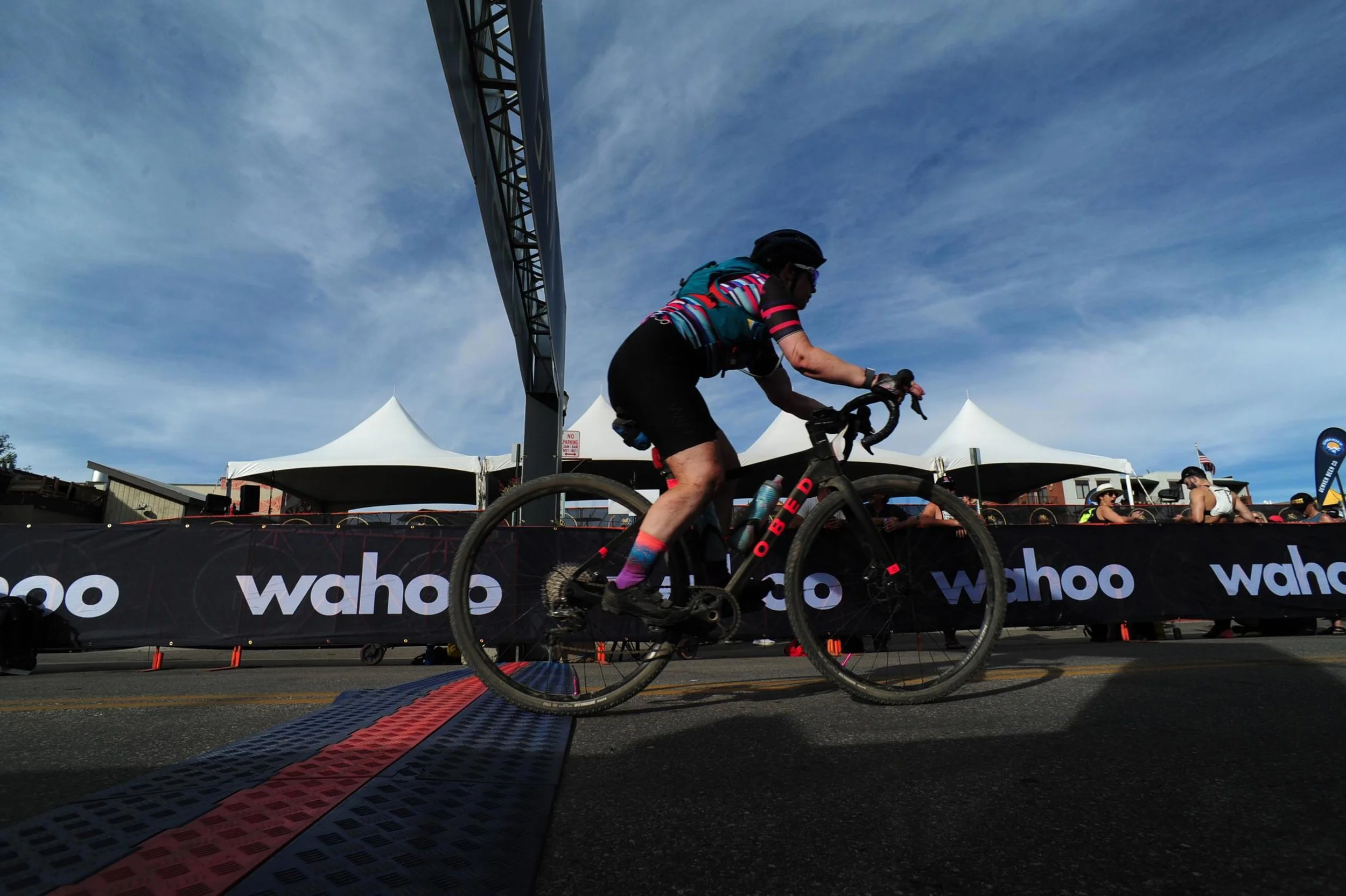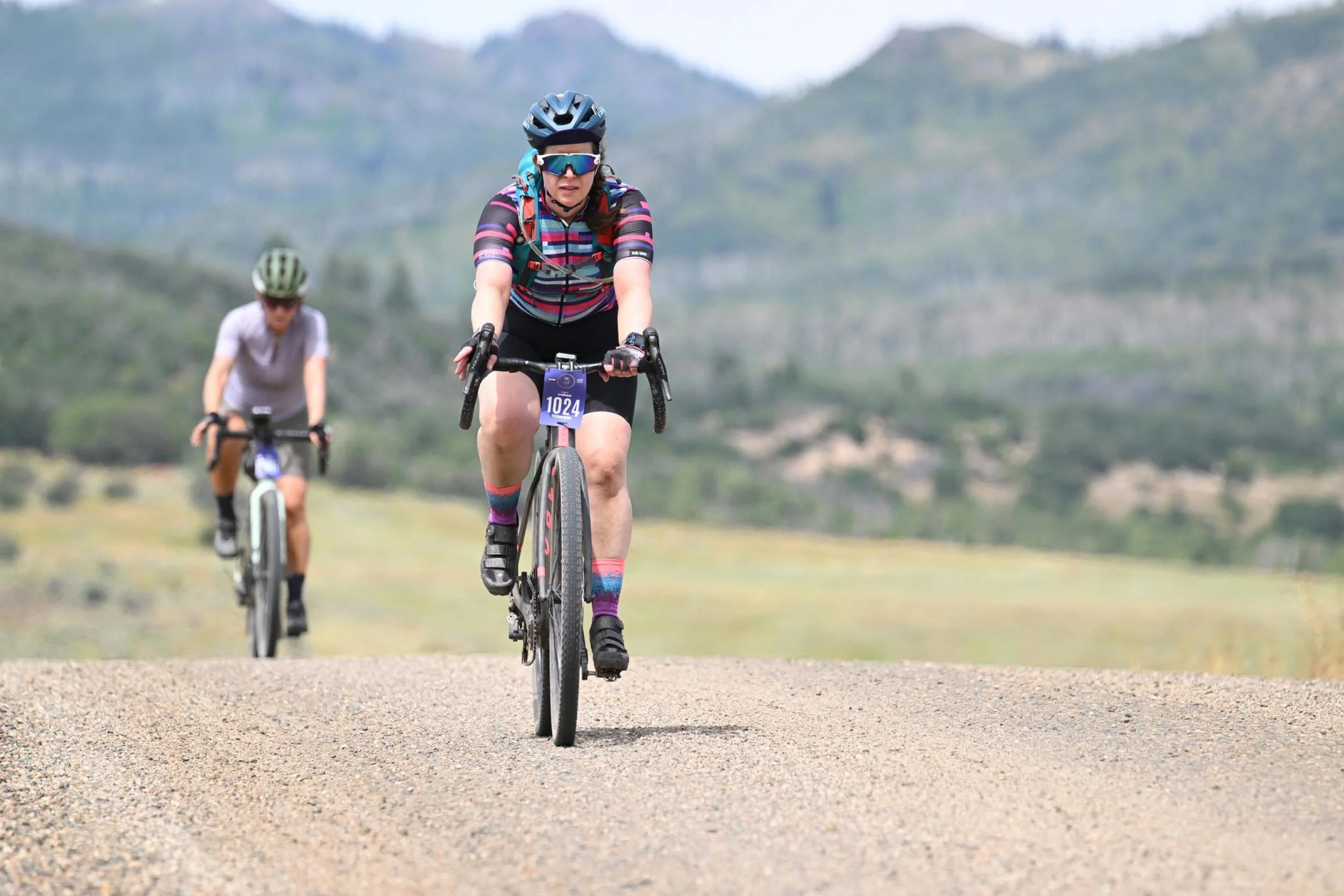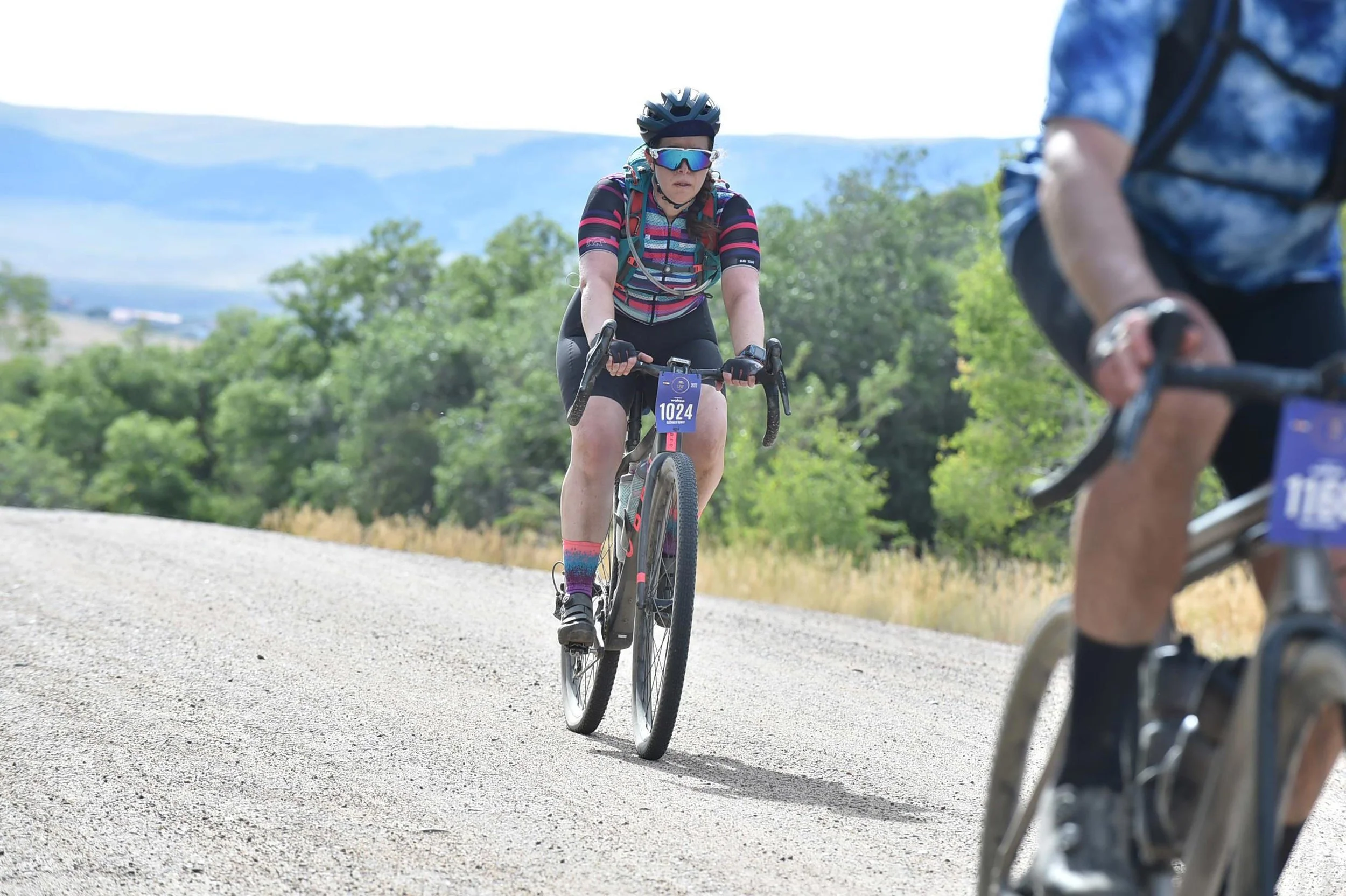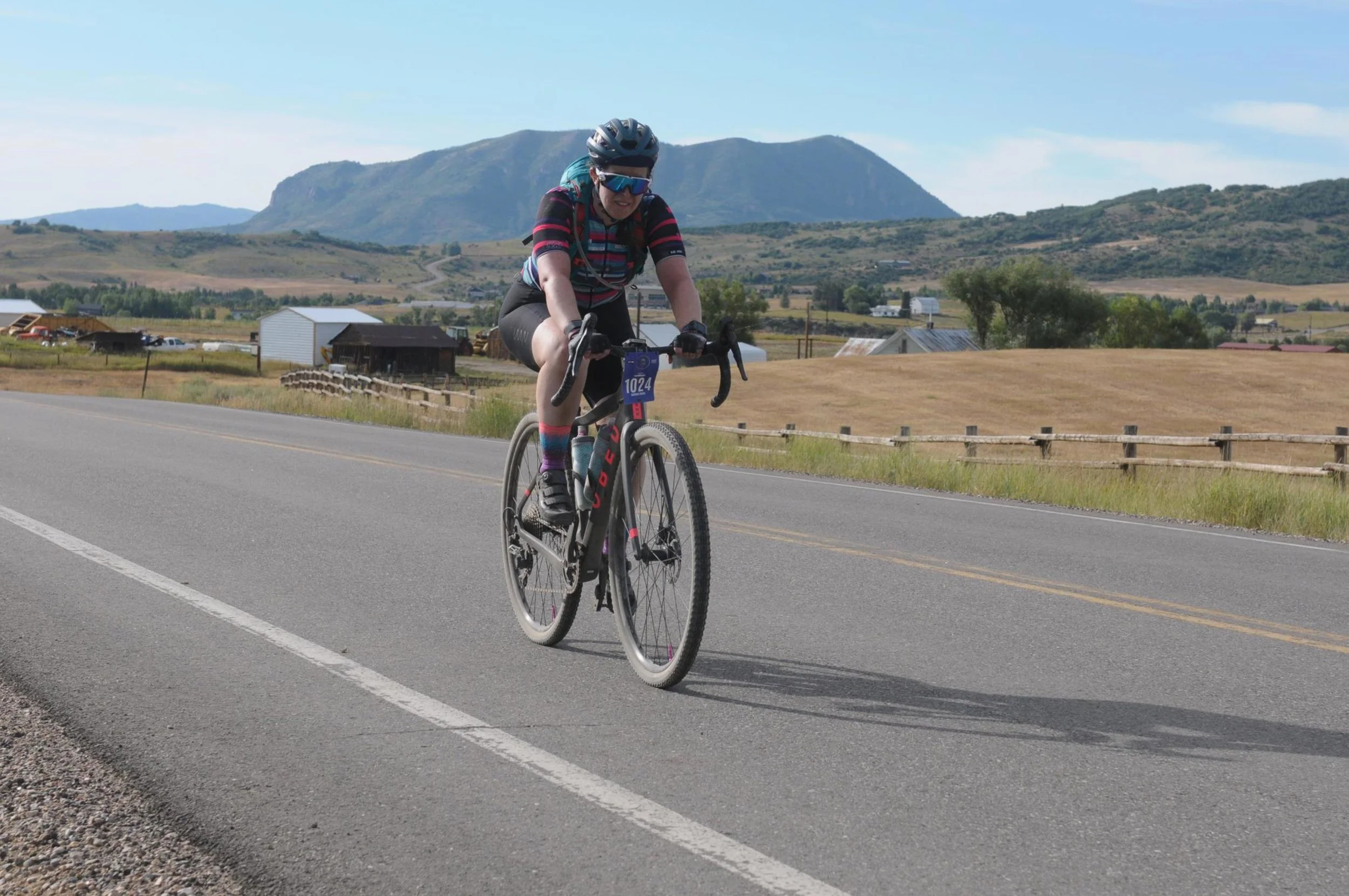What Does It Take To Ride 100 Miles?
Four gels, four stroop waffles, a pack of clif blocks, a few hi-chews, multiple bottles lot of Tailwind, water, plus some chamois buttr and a whole lot of grit and determination. That’s what it took to make it through 100 miles at Steamboat gravel. While it was a hard and hot day out there it reminded me of why I love the world of endurance athletics. The excitement of a starting line, feeling your legs show up, working to break through those hard moments, meeting amazing people, and accomplishing what you set out to do. But it takes more than just one day of determination to cross that finish line, it takes months of building your endurance to make it across that finish line.
For me training began back in April and since then I have ridden 1249 miles, plus numerous trainer rides, spent 131 hours pedaling on the bike all over the course of 65 workouts. I started racing this season with 50 miles at Co2Ut in Fruita, and then tackling Bighorn Gravel in Gypsum. Each of those races taught me a little more about what gravel racing can be. One thing that I have learned in all my years of racing and training for Ironman triathlons and now gravel is that there are three other disciplines that are just as important as the miles that you spend on your bike. Those are nutrition, recovery, and cross training.
My friend Lewis likes to remind me that these long bike races are just eating contests. It is about how well you are replenishing your glycogen reserve while out on the course. Even though you are not running your body at max force for 5+ hours, you do need to keep that engine from hitting empty. I’ve been to that place more times than I want to admit, we call in bonking in the cycling community, and it’s when you just have nothing left, your legs feel like cardboard, your brain starts to go foggy and you realize that you need fuel and you need it quickly. Fueling is something you practice leading up to race day, finding what products work best for you, learning what your body can and cannot handle, and even then at mile 80 of a race it can be a challenge to stick to the plan. While race day fueling is important, you have to continue fueling your body when you are off the bike as well. I have unfortunately learned this the hard way, and look at fueling very differently these days. I focus on listening to my body's cues, and many times eating after a hard workout even if I don’t feel like it. At the end of a hard training block making sure that you have properly fueled on and off the bike can be what makes or breaks the really hard days out there.
Recovery is one of my favorite things to talk about as a physical therapist. A few of my friends joke with me about the amount of balls and rollers that live on my floor, but I find having them out is a reminder to use them when I have even just a few minutes of downtime. I like to include a short dynamic warm up prior to heading out so my hips and core are ready to go, and then spend some time later in the day rolling out, using my favorite massage ball, or even doing some gentle stretching. While rolling and stretching after a workout can be incredibly beneficial I have learned the benefits of seeing other practitioners to make sure that I am not getting too unbalanced. Between PT sessions to get my spine moving and my core kicking in better, some dry needling to release tension built up from hours on the bike, and massage work I was able to keep myself moving without any overuse issues. Another big part of recovery is sleep, and making sure that I get enough sleep. Everyone has their own things that work for them, but I find that staying away from backlit screens an hour before bed, and making sure that the environment I am sleeping in is cool and dark (even if that means using an eye mask) is almost a guarantee for a better night's sleep with more REM and SWS which help the body’s ability to recover.
One of the least talked about prep strategies for racing is cross training. For some people it is lifting heavy weights to up their power, but for me it has always been about Pilates. Finding that increase in core strength allows for improved force production into my legs, so when those big climbs come I can find that little extra push. As a cyclist some of my favorite exercises for developing that connection are exercises that are more full body focused. I love scooter for finding that hip stability in the front leg and power from the moving leg. Single leg jackrabbit brings in a little more of the core control component, and I find even more of a challenge if I do this facing the opposite direction with a box on in short box position. And lastly using the chair with a split pedal, setting up like you are going to do a pike, lifting so your back is parallel to the floor, maintaining your core control and finding the up and down pedal stroke motion, this is one that you can find a lot of variability in what you are targeting depending on your spring settings. I was amazed how much I called on these exercises when things got hard while going up these beautiful Colorado mountains.
When all of these components come together they can leave you with a magical race experience. I love being a part of this crazy community of ordinary people with extraordinary determination!




